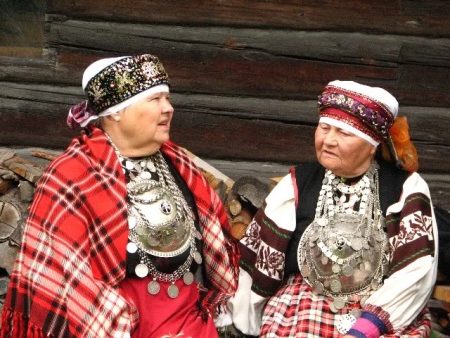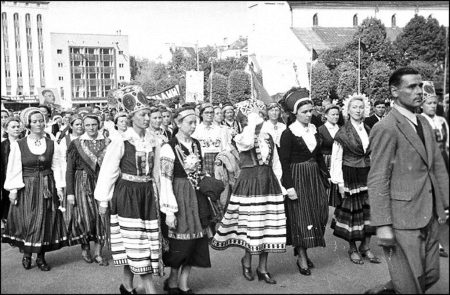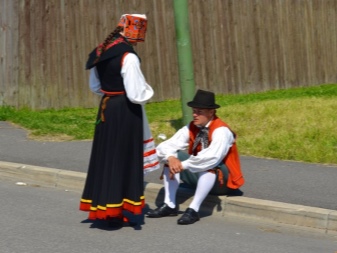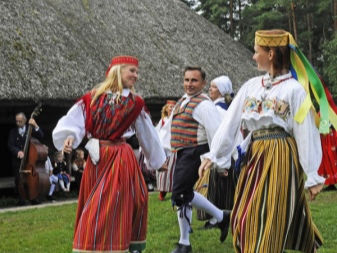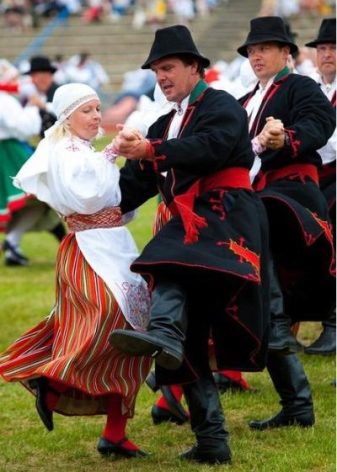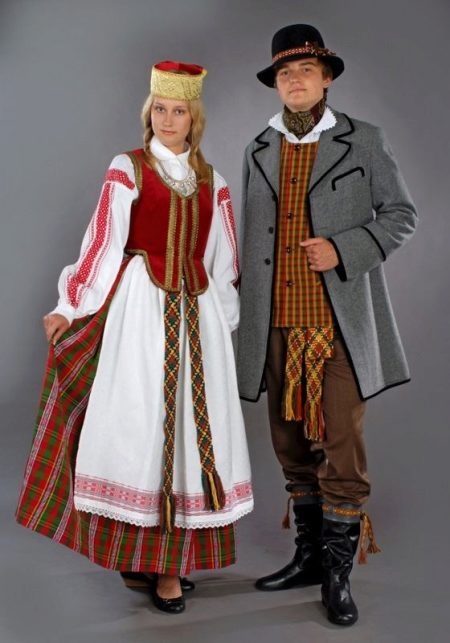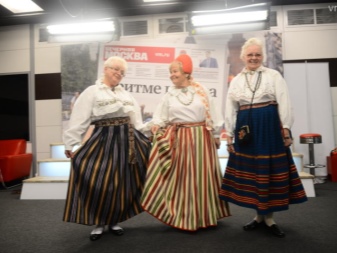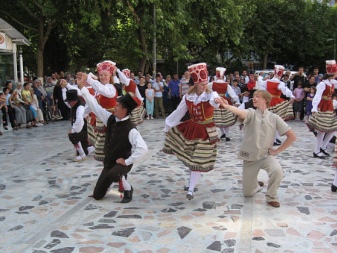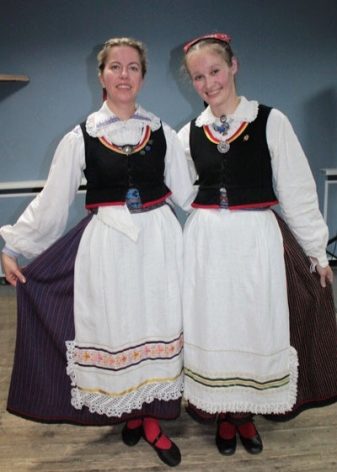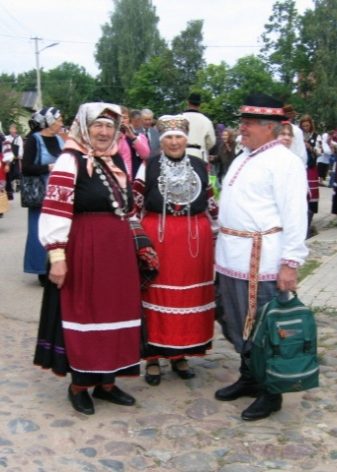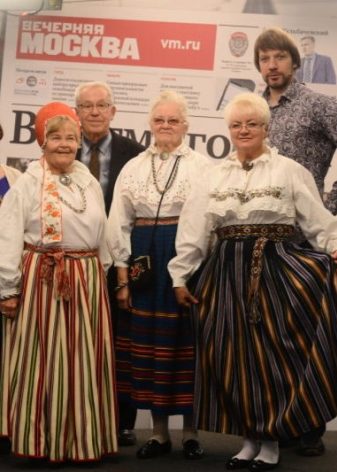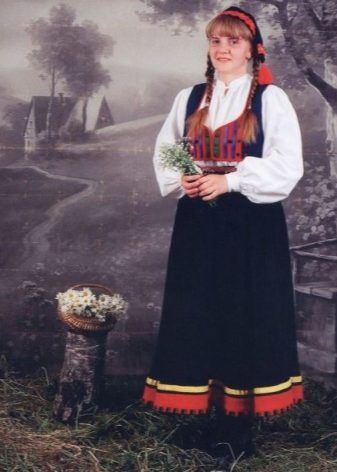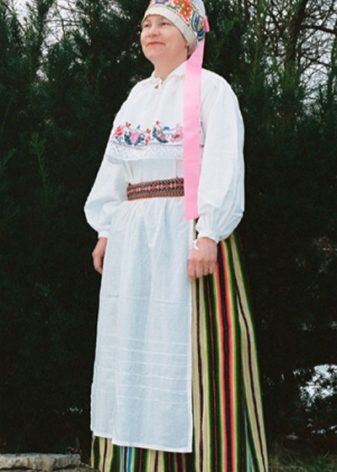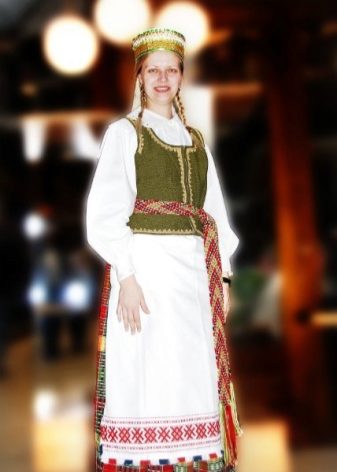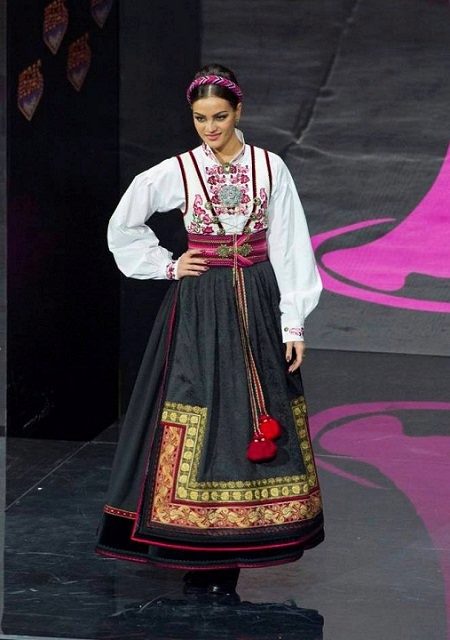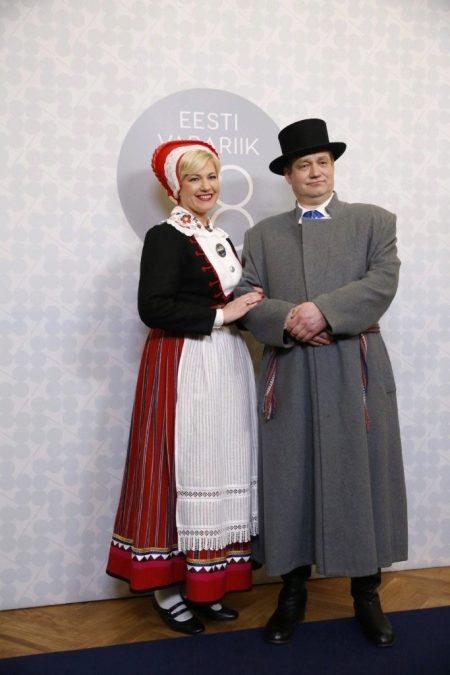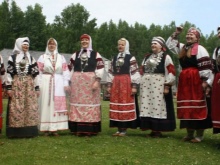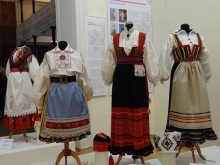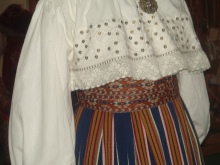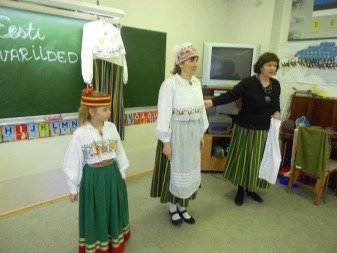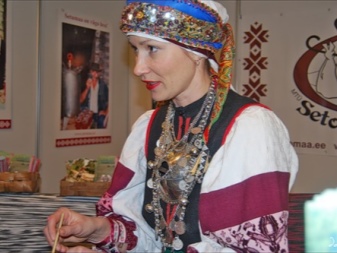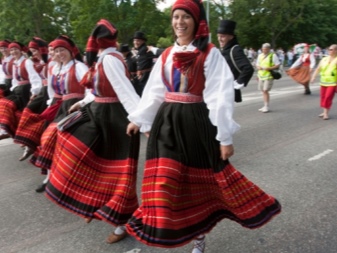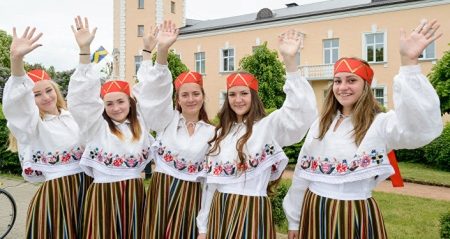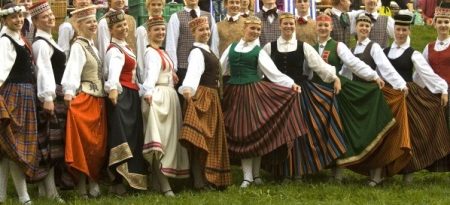Estonian national costume
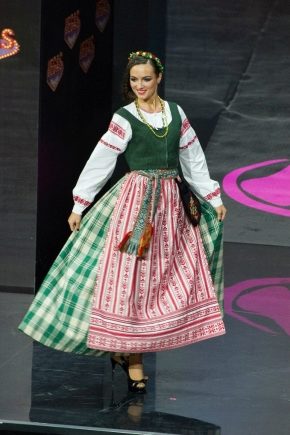
The national costume is a part of the culture of each nation, and it has been formed for centuries. Estonia is not an exception in this matter either. The national Estonian costume reflects the peculiarities of national life, its world perception, reflects the customs of this nation and its artistic taste preferences.
A bit of history
The peculiarities of Estonian clothing became known already from archaeological excavations. The ancient attire of the Estonians, like of any other people, was not particularly elegant. These were ordinary shirts of simple cut, which were sewn from canvas or woolen fabric, and had wide sleeves.
Women as a skirt used a piece of dark, dense matter, which was wrapped around the thighs, and tied with a plain belt.
The appearance of the men was even more unassuming - a thick shirt, pants with a belt, and as shoes - sandals or postoli. Fabric for tailoring and its tailoring were made in each family independently.
It should be noted that Estonian clothes fell under the influence of other states, and this could not but affect the cultural characteristics of Estonia itself. In particular, it is possible to draw attention to the fact that Estonian national clothes have a lot in common with the outfits of Lithuania, Latvia, and Sweden.
Estonians endowed some elements of their national costume with miraculous power. For example, the belt was supposed to give a person strength, promote good fertility. Therefore, its making or choice was particularly reverent.
Due to the fact that the territory of Estonia was conditionally divided into several parts, the differences in the national dress of these regions were also obvious. There are 4 directions in the culture of the state:
- northern region;
- western region;
- South Region;
- island region.
The national clothes in them are insignificant, but nevertheless differ in composition, ornaments, colors.
Today, the national clothes of Estonians are no longer made by them at home, but are of factory origin. Especially fascinating ornaments and embroidery, which Estonians often do on clothes by hand. Each character has its own purpose and means something.
Also, an integral part of Estonian folk clothes are its elements such as socks, gloves or mittens.
At this time, the Estonian national costume is experiencing its next revival, and is the pride of the nation. He is put on the most important and solemn events.
Description of the dress
The national attire of women in Estonia includes a shirt of a long, free cut with full sleeves, over which a skirt or a sundress was worn. Mandatory element of the dress - decorated or embroidered belt. At the top of the skirt with a belt fastens a leg, which consists of two pieces of fabric that are at the level of the hips.
In cool weather, a woman can cover her shoulders with a special embroidered blanket - a syboy, or wear a long fitted caftan. Married women cover their heads in a special way with a folded towel or a special cap.
The national costume of men is less pretentious: free-cut pants, necessarily girded with an original belt, a shirt decorated with ornaments and embroideries. The head of the man is covered with small felt hats, and in the cold season with hats with earflaps, sewn of natural fur.
Modern models
Modern designers have the opportunity to develop new models of elements of the national costume of Estonia, applying modern fashion trends, including the play of colors, the use of different types of fabrics, but without violating the basic idea of the dress.
Beautifully looks on a woman fluffy skirt, made in black and red colors in combination with a white blouse with puffed sleeves and a red waistcoat. The permanent element of the image is a belt embroidered with red threads. As a headdress, you can use the cap of an unusual cut. Be sure the presence of socks under light ballet shoes.
The Estonian national costume is an integral part of the culture of this nation, which it carefully preserves and preserves, thereby honoring its ancestors and the history of their nation as a whole. This deserves respect, because to remember about its origin and respect its ancestors, their way of life, cultural values - this is the sacred duty of every person.
